In
high-frequency welded steel pipe production, the weld seam quality is directly affected by the state of the steel pipe billet's forming seam, with the parallelism of the weld joint surfaces being particularly crucial. During the steel pipe seam welding process, the parallelism of the seam seam is primarily maintained by adjusting the upper roll's press-down and the gap between the two upper rolls.
1. Characteristics of the Welding Roller's Pass Profile
The upper roll's pass profile radius in the welding extrusion stand is approximately 10% larger than that of the other rolls. Consequently, a gap exists between the outer roll surface of the upper roll and the ideal circular cross-section of the steel pipe, commonly known as the "heel gap." In actual forming, the cross-section of a steel pipe is unlikely to be perfectly circular. Typically, insufficient deformation of the strip edge results in a peach-shaped cross-section. If not adjusted, the weld joint surfaces will be non-parallel, seriously affecting weld quality. If the upper squeeze roll uses the same pass radius as the other squeeze rolls, adjusting the upper squeeze roll's reduction to eliminate the V-shaped seam will result in the outer roll surface of the upper squeeze roll pressing strongly against the steel pipe surface, which can easily cause surface scratches and further create a more severe V-shaped seam. Therefore, the "heel gap" setting is based on the actual characteristics of the steel pipe billet forming process, effectively eliminating the V-shaped seam by adjusting the upper squeeze roll's reduction.
2. Upper Squeeze Roller Adjustment Method
When setting the squeeze roll positions according to the standard pass, if a V-shaped seam is observed, the upper squeeze roll reduction can be adjusted within the "heel gap" range. The upper squeeze roll reduction limit is where the outer roll surface of the upper squeeze roll creates a shallow indentation on the steel pipe surface. Experience has shown that when this reduction limit is reached, a parallel (I-shaped) seam can usually be formed even with high-strength steel pipes. When applying this experience, the gap between the two upper squeeze rolls must be set strictly according to the design value. Changes in this gap directly affect the "heel gap." If this gap is not strictly set to the designed value each time the rolls are changed, reproducible pass adjustment will be difficult. For the same reason, when adjusting the asymmetrical upper rolls to eliminate misalignment, only adjust the upper roll on the operating table side, leaving the upper roll on the other side fixed as a reference. Randomly adjusting both upper rolls may cause the gap between the upper rolls to gradually deviate from the set value.
3. Adjustment Techniques for Special Situations
3.1 Pass Adjustment for Thick-Walled High-Strength Steel Pipes: The thicker the pipe wall and the higher the material strength, the more difficult it is to eliminate the V-shaped weld seam that forms during welding. If a noticeable indentation is formed on the outer surface of the upper roll but an I-shaped weld cannot be achieved, this indicates that the adjustment limit has been reached. Further lowering the upper roll will not only cause severe indentation but also form a more severe V-shaped weld seam. This phenomenon indicates that a larger "heel gap" is needed to allow for greater adjustment. This can be achieved by increasing the gap between the two upper rolls. It should be noted that the ideal upper roll gap value varies with the wall thickness and strength of the steel pipe. For example, thinner wall thicknesses generally require a smaller upper roll gap to improve welding stability. For thicker wall thicknesses, even a moderate increase in the upper roll gap will not affect welding stability. Therefore, increasing the upper roll gap to achieve a larger "heel gap" when forming thick-walled or high-strength steel pipes will not affect welding stability as long as the increase is appropriate. This adjustment method has two limitations: either the outer side of the upper roll interferes with the vertical rolls, preventing further increase in the gap; or the upper roll gap is too large, causing welding instability. In either case, the extrusion roll structural design needs to be modified to achieve a larger set "heel gap."
3.2 Pass Adjustment for Thin-Walled Steel Pipes: For thin-walled steel pipes, an I-shaped butt joint can usually be achieved without excessive upper roll reduction. A common issue is the stability of the formed joint during welding. The stability of the formed joint is affected by many factors, but appropriately reducing the upper roll gap generally improves the stability of the formed joint. Therefore, thin-walled steel pipes can take advantage of the fact that they don't require a large "heel gap." When the forming joint is unstable, the problem can be addressed by appropriately reducing the gap between the upper rollers.
4. Confirming the Condition of the Formed Joint
Observing the metal flow lines in the weld zone of a cross-section is the most accurate method for confirming the condition of the formed joint during welding. This method not only assesses the joint condition but also determines whether the weld extrusion and welding power are appropriate. To facilitate flow line observation, specimens should be taken before the weld is heat treated. If the metal flow line angles at the upper and lower portions of the weld are essentially symmetrical, the joint at the butt joint is considered parallel (I-shaped). Using the mid-wall thickness as the plane of symmetry, the difference in flow line angles between the upper and lower symmetrical areas should generally be limited to within 5°. Furthermore, the "waist drum" shape of the heat-affected zone should also be essentially symmetrical. The simplest on-site confirmation method is to compare the shape and size of the internal and external burrs after welding. If the joint is I-shaped, the size and shape of the internal and external burrs are essentially the same. Burr observation is the most intuitive method on the production line, but this method cannot be quantified and can only be used as a rough estimate. If conditions permit, the use of the flowline observation method to observe the metallographic structure of cut pieces is recommended. However, sample preparation generally requires a long time, and waiting for results can seriously impact on-site work efficiency. Therefore, the following relatively simple method for confirming the joint state is often used. While this method does not produce completely accurate results, it generally allows for a relatively accurate assessment of the joint state, significantly reducing the waiting time required for the flowline observation method. This method allows for accurate assessment of the joint state. In principle, the contact pattern and heating pattern are identical. The contact pattern has clear boundaries, while the heating pattern is more ambiguous, requiring experience to determine. However, when the welding extrusion volume is high, the longitudinal distribution of the contact pattern can become so short that it is difficult to determine, while the heating pattern is not affected by this.
5. Conclusion
In high-frequency steel pipe shaping and welding, by analyzing the relationship between contact and heating patterns and the joint state of the butt joint, and adjusting the upper roll gap and reduction of the welding extrusion rolls, it is possible to accurately and timely ensure that the steel pipe edge weld achieves a good weld condition.
(1) When the joint is I-shaped, it means that the butt joint surfaces are basically parallel during the welding process, and no adjustment of the squeeze roller pressure is required;
(2) When the joint is V-shaped, it means that the lower surfaces of the butt joint surfaces come into contact first during the welding process, and the I-shaped state can be achieved by increasing the pressure of the upper squeeze roller;
(3) When the joint is inverted V-shaped, it means that the upper surfaces of the butt joint surfaces come into contact first during the welding process, and the I-shaped state can be achieved by reducing the pressure of the squeeze roller.
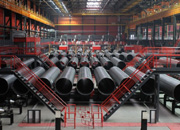 Threeway Steel is known as a professional supplier engaged in manufacturing and distributing a wide range of steel pipe, and our headquarter located the central part of China – Hunan and six associated factories throughout China.
Threeway Steel is known as a professional supplier engaged in manufacturing and distributing a wide range of steel pipe, and our headquarter located the central part of China – Hunan and six associated factories throughout China.
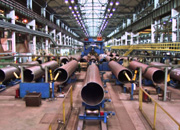 Threeway Steel is known as a professional supplier engaged in designing, manufacturing and distribution of a wide range of steel products with the headquarter located the central part of China – Hunan and six associated factories throughout China.
Threeway Steel is known as a professional supplier engaged in designing, manufacturing and distribution of a wide range of steel products with the headquarter located the central part of China – Hunan and six associated factories throughout China.
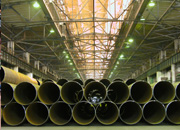 Threeway Steel is known as a professional supplier engaged in designing, manufacturing and distribution of a wide range of steel products with the headquarter located the central part of China – Hunan and six associated factories throughout China.
Threeway Steel is known as a professional supplier engaged in designing, manufacturing and distribution of a wide range of steel products with the headquarter located the central part of China – Hunan and six associated factories throughout China.
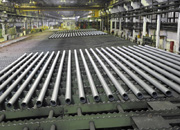 Threeway Steel is known as a professional supplier engaged in designing, manufacturing and distribution of a wide range of steel products with the headquarter located the central part of China – Hunan and six associated factories throughout China.
Threeway Steel is known as a professional supplier engaged in designing, manufacturing and distribution of a wide range of steel products with the headquarter located the central part of China – Hunan and six associated factories throughout China.
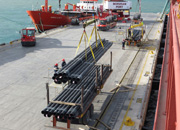 Threeway Steel is known as a professional supplier engaged in designing, manufacturing and distribution of a wide range of steel products with the headquarter located the central part of China – Hunan and six associated factories throughout China.
Threeway Steel is known as a professional supplier engaged in designing, manufacturing and distribution of a wide range of steel products with the headquarter located the central part of China – Hunan and six associated factories throughout China.

